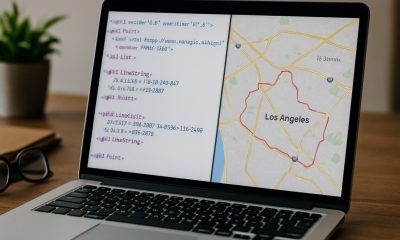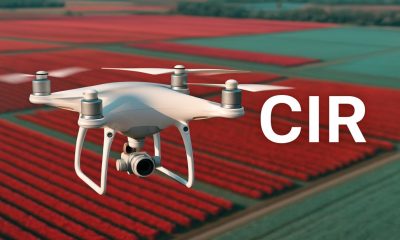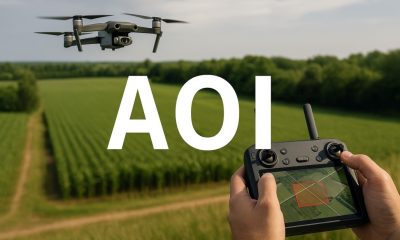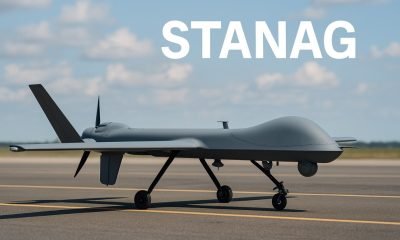- Acronym Guide
- AAM
- ABS
- AC
- ACAS
- ADS-B
- AFAC
- AGL
- AI
- AIM
- ALS
- AM
- AMA
- ANSP
- AOI
- APPI
- AUV
- AUVSI
- ARPAS-UK
- ASTM
- ATC
- BVLOS
- CAA
- CAAC
- CAB
- CASA
- CATT
- CBO
- CBR
- CBRN
- CDMA
- CDR
- CFR
- CIR
- COA
- COMINT
- CORS
- COTP
- COTR
- CPTED
- CV
- C2
- DAA
- DEM
- DFI
- DFS
- DGCA
- DHS
- DOD
- DPA
- DPEs
- DRG
- DRO
- DSM
- DSMX
- DSP
- DSSS
- DTM
- EASA
- EFT
- EO
- EOD
- EO/IR
- ELINT
- EMI
- ESC
- EVLOS
- eVTOLs
- FAA
- FCC
- FCS
- FHSS
- FICCI
- FLIR
- FOB
- FOV
- FPS
- FPV
- GBDAA
- GCP
- GCS
- GDPR
- GML
- GNSS
- GPS
- GSD
- GVC
- HDR
- HOGE
- IACRA
- ICAO
- ICS
- IMU
- INS
- IR
- ISA
- ISR
- ITU
- JARUS
- LAAMS
- LAANC
- LAATM
- LAI
- LBA
- LIDAR
- LOS
- LSALT
- MAC
- MAVLink
- MLIT
- MMS
- MSL
- MTOM
- NDAA
- NCSL
- NFZ
- NIST
- NMEA
- NOTAM
- NPA
- NPRM
- NTIA
- OBIA
- OEM
- OFDM
- OOP
- PASM
- PAV
- PCV
- PdM
- PEC
- PIC
- PID
- PIPL
- PLD
- PM
- PN
- PPK
- PPS
- PSM
- PWM
- UAM
- UAOP
- UAS
- UASTM
- UAV
- UCAVs
- UHD
- UHF
- USV
- UTM
- RAIM
- RCC
- RCS
- RFI
- ReOC
- RePL
- RMS
- ROI
- RPAS
- RPC
- RTH
- RTK
- SaR
- SAR
- SARP
- SBAS
- S.Bus
- SBIR
- SEDENA
- SfM
- SFOC
- SIGINT
- SLAM
- SMS
- SORA
- STANAG
- STTR
- sUAS
- TCAS
- TCCA
- TFR
- TIN
- TOF
- TP
- TPS
- TSA
- VHF
- VLOS
- VTOL
Drone Acronyms
What is CPTED & How Does it Work?
Published
2 months agoon
By
Jacob StonerTable Of Contents

Definition
CPTED, or Crime Prevention Through Environmental Design, is a multi-disciplinary strategy aimed at reducing crime by designing and managing the physical environment in a way that naturally deters unlawful behavior. In the context of drone technology, CPTED integrates aerial surveillance to enhance visibility, monitor access points, and support real-time deterrence in public and private spaces.
Usage
Urban planners, law enforcement agencies, and private security firms use drones as a tool within CPTED strategies to improve surveillance coverage, especially in hard-to-monitor areas. Drones can assist with nighttime patrols, monitor blind spots between buildings, and provide an aerial perspective that traditional ground-based systems may miss.
Relevance to the Industry
As cities become smarter and more reliant on integrated security networks, drones offer a flexible and scalable enhancement to CPTED methods. Their ability to fly predefined patrol routes, stream live video, and cover large or complex properties aligns with the core CPTED principles of natural surveillance and territorial reinforcement. The use of UAVs in this space is expanding across campuses, retail centers, transportation hubs, and critical infrastructure zones.
How Does CPTED (Crime Prevention Through Environmental Design) Work?
CPTED applies design strategies that reduce opportunities for crime by influencing how people interact with space. When drones are integrated into CPTED strategies, they serve as an aerial layer of surveillance and rapid response. This combination strengthens the effectiveness of environmental design by improving oversight, deterring crime, and aiding law enforcement. Here’s how drone-supported CPTED works in practice:
Strategic Deployment Based on Environmental Risk
Security planners assess areas with elevated crime risk—such as parking lots, alleyways, parks, or under-lit corridors. Drones are then programmed to monitor these specific locations. Their mobility allows them to patrol wide spaces, restricted access zones, and blind spots that fixed cameras can’t reach.
Predefined Patrol Routes and Real-Time Monitoring
UAVs follow scheduled flight paths based on historical crime data and urban layout. During patrols, drones stream live video to command centers or mobile units. Their real-time monitoring enables fast detection of suspicious activity and supports rapid deployment of ground units when necessary.
Integration with Ground-Based Surveillance
Drones do not operate in isolation. They complement fixed surveillance cameras, access control systems, and ground patrols. In many systems, drones are automatically dispatched when motion is detected in restricted areas or when an incident is reported. This layered approach enhances situational awareness and speeds up response.
Nighttime and Low-Light Operation
Equipped with thermal or low-light cameras, drones can provide critical visibility during nighttime hours. This supports CPTED’s principle of natural surveillance even when human activity is low, which is essential for deterring crime in parks, parking structures, or transit terminals after dark.
Data Collection for Crime Pattern Analysis
Drones record and store footage of patrols, which can be used to analyze movement trends, identify recurring hotspots, or refine CPTED strategies. This data helps planners decide where to increase lighting, reposition ground cameras, or redesign environmental features to reduce risk.
Community Awareness and Deterrence
In some programs, drones are made visible intentionally to reinforce a sense of security and deter potential offenders. Signage, public outreach, and media campaigns often accompany these deployments to inform the community and improve trust.
By combining environmental design with real-time aerial monitoring, drone-supported CPTED strengthens public safety while reducing the need for costly infrastructure changes or constant ground patrols.
Example in Use
“The city incorporated drones into its CPTED framework by flying routine surveillance missions over park areas and public transit zones to improve deterrence and real-time incident response.”
Frequently Asked Questions about CPTED (Crime Prevention Through Environmental Design)
How do drones contribute to CPTED principles?
Drones enhance natural surveillance by offering dynamic coverage from above, giving law enforcement and security teams visibility into areas that are otherwise difficult to monitor. They also act as a deterrent when visibly deployed in known trouble zones.
What types of environments benefit most from drone-supported CPTED?
Urban neighborhoods, industrial parks, school campuses, and public transport terminals benefit greatly. Drones are especially effective in large areas where ground patrols alone may be insufficient.
Are drone flights for CPTED regulated?
Yes. Operators must comply with national aviation rules (like FAA or Transport Canada regulations), respect privacy laws, and in some cases, obtain special waivers for nighttime or over-people operations.
For examples of these acronyms visit our Industries page.
As the CEO of Flyeye.io, Jacob Stoner spearheads the company's operations with his extensive expertise in the drone industry. He is a licensed commercial drone operator in Canada, where he frequently conducts drone inspections. Jacob is a highly respected figure within his local drone community, where he indulges his passion for videography during his leisure time. Above all, Jacob's keen interest lies in the potential societal impact of drone technology advancements.











